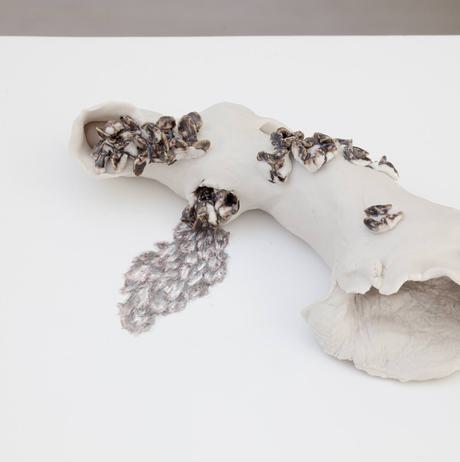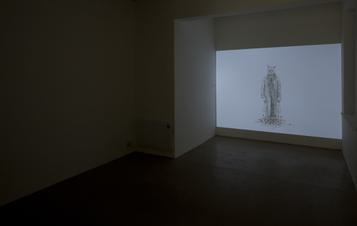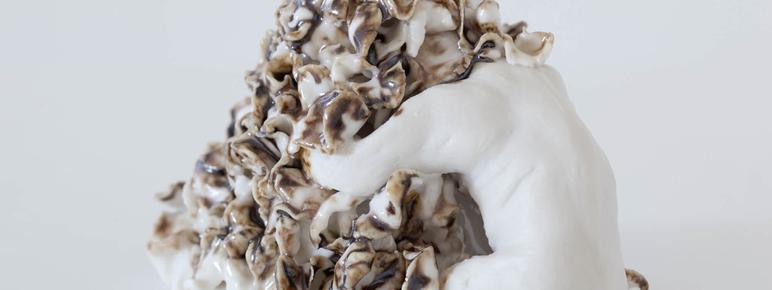
About Rachel Goodyear
The world seen through the work of Rachel Goodyear appears to have suffered a psychotic episode.
In autumn 2011 YSP presented new and recent work by Rachel Goodyear. Tipped as one of Art Review’s Future Greats in 2008 and nominated for the Northern Art Prize in 2009, Goodyear’s compelling cast of characters inhabit a strange and complex world of contradictions, existing somewhere between the macabre and mundane.
Exploring themes of fear, desire, vulnerability and isolation, Goodyear invites the viewer into a dark place where human psychologies and animal behaviour collide and merge. The exhibition included a new series of work inspired by time spent discovering the physical and imagined landscape at YSP, resulting, for the first time, in small-scale sculptures. As if scrambling from the pages of Goodyear’s sketchbook, figures appear in the gallery as animations and porcelain sculptures, still fragile and unsure of their new configuration. The viewer struggles to recognise the human or animal depicted in sculptures such as the hazards of falling asleep in the woods but is nonetheless intrigued by what could have happened to these creatures, whose bodies have become engulfed by a strange material.
"For YSP I am creating drawings inspired by characters I find within the surroundings, stories from its history (both rumoured and true), the natural reserve and the relationships between species and the people that pass through. My characters present precarious relationships, both animal and human reflecting vulnerabilities, fear, desire, greed and self-preservation. Scenarios that are bleak, macabre and absurd lure the viewer in to a world that is not all that it seems. Characters that, at first glance, appear vulnerable, display body language that suggest they are actually defiant (and vice versa). Each drawing displays a balance that can tip either way."
- Rachel Goodyear
New works on paper offered curious situations: dogs’ new tricks sees a faceless bride led to the altar by, and perhaps towards, a pack of labradors. Elsewhere Goodyear’s work paralleled various mythologies, including manifestations of the ‘trickster’ who appears in poorly constructed disguises and waits to be discovered. New animations showed devils locked in an endless dance that is more than tinged with menace. Sinister sound within them drew the viewer through the gallery and into Goodyear’s world, where fascination and bewilderment at the conduct of these characters takes over.
Some of Goodyear’s most recent work included in the exhibition was informed by a residency at the Banff Centre, which is set within the stunningly remote mountains of Banff National Park, Canada. There, she imagined feral women simultaneously vulnerable and defiant, their delicate skin covered in scratches and their tough bare feet black with mud. In Goodyear’s scenario, bears emerge from hibernation early and creep into towns half-formed, unable to hold their own weight, inciting both pity and fear in those who encounter them. The artist exploits these contrasts and ambiguities: between anxiety and compassion, good and evil, friend and enemy, pain and pleasure. Her characters can be found embedded in destructive relationships, each party involved in either a state of resignation, or else trapped in an eternal loop of repetition, preoccupied by a pointless task or locked in a moment of resignation.
A new publication produced by YSP documented the exhibition with in situ photography and an in-conversation between the artist and Clare Lilley, Director of Programme at YSP. The publication is the first to offer a survey of Goodyear’s work to date, with archive images and a commissioned essay by Laurence Sillars, Chief Curator at BALTIC.
You might also like
More- Art Outdoors

David Nash: Black Mound
Black Mound was made for the YSP landscape by David Nash in 2013. Once in place, he charred the oak forms through a carefully controlled burning process that relates to his interest in the four elements. - Profile
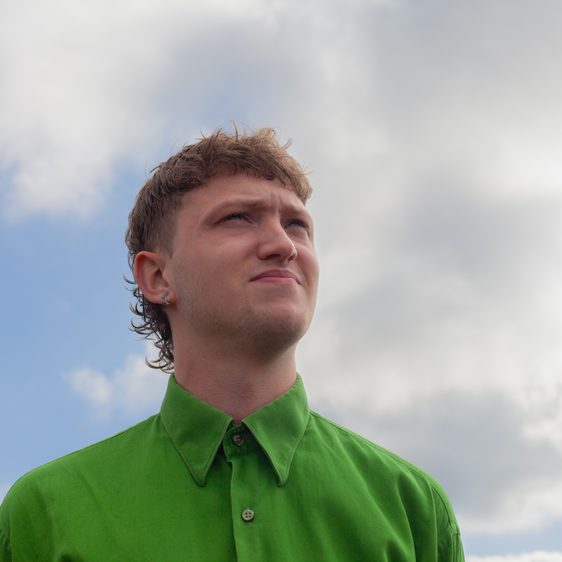
Jim Ever
Yorkshire Graduate Award 2025 - Profile
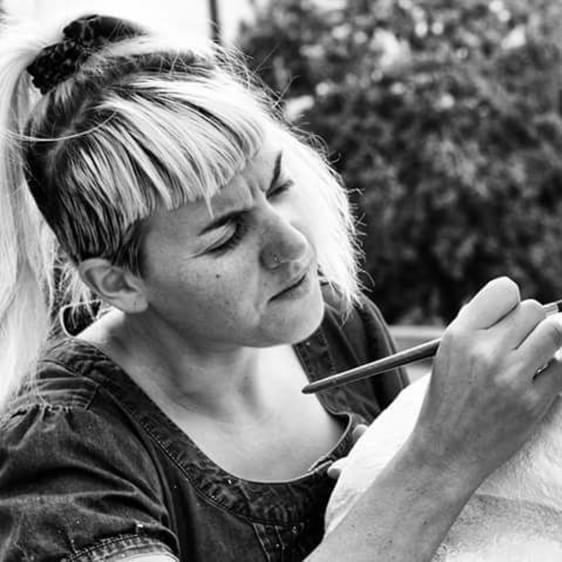
Sarah-Jane Mason
Artist Educator - Art Outdoors

Idit Nathan and Helen Stratford: Further Afield
Further Afield is a series of sculptures sited around the Upper Lake for visitors to encounter and respond to. Each work is made from wooden railway sleepers, with words engraved on the surface. Certain words have been highlighted by the artists using brightly coloured paint. Over time, the wood will age and become embedded in the landscape of the Park.
